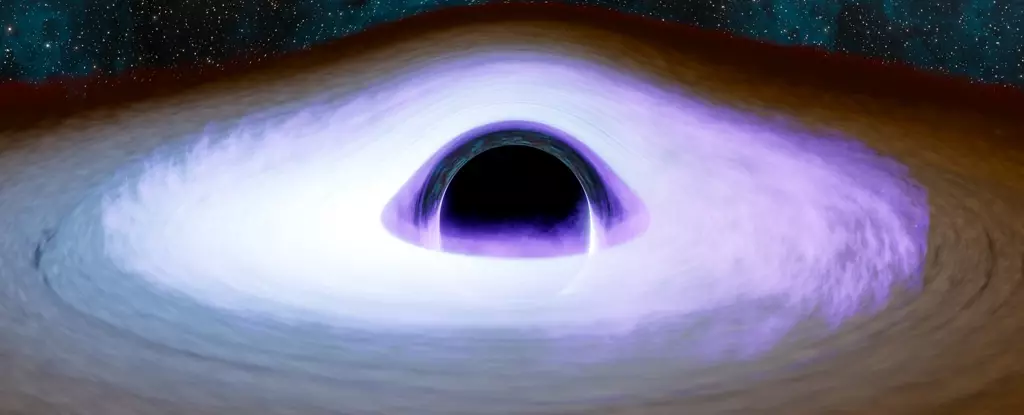Those fortunate enough to witness a total solar eclipse will never forget the awe-inspiring view of the Sun’s corona—a halo of brilliant light encircling the Moon during totality. This corona represents the Sun’s outer atmosphere, characterized by its unusual properties: despite its tenuousness, it reaches extreme temperatures of millions of degrees. This raises an intriguing question in astrophysics: do black holes share a similar phenomenon? Recent research has pushed the boundaries of our understanding, revealing that, akin to the Sun, black holes possess a corona, albeit one hidden from direct observation until now.
Current models suggest that active black holes exist within a complex system of regions including an accretion disk—an extensive, rotating discoidal structure consisting of gas and dust spiraling into the black hole. Typically, this disk is embedded in a donut-shaped torus of material, while famished jets of ionized gas erupt from the black hole’s poles, accelerated to nearly the speed of light. This multifaceted arrangement contributes to the classification of different types of active galactic nuclei (AGNs), allowing astronomers to infer the black hole’s orientation relative to our vantage point in space.
Interestingly, the innermost section of the accretion disk is theorized to operate under extreme conditions: it experiences superheated levels of energy at a density near vacuum. This region, designated the corona, boasts astonishing temperatures in the billions of degrees. Unfortunately, due to its thin nature, its radiative emissions are often outshined by the more luminous accretion disk, complicating observational efforts and masking its presence from direct detection.
An innovative method inspired by the principles of observing the Sun’s corona during an eclipse was utilized in a groundbreaking study featured in *The Astrophysical Journal*. The research team focused on a selection of obscured and unobscured black holes—designations that refer to whether the gas and dust torus obscures our ability to see the accretion disk. Obscured black holes, much like an eclipsed Sun, prevent direct observation of illumination from the disk, as the black hole’s corona remains hidden beneath layers of matter.
However, the exceedingly high-energy X-rays emitted by the corona present a unique opportunity for observation. These X-rays can scatter off the surrounding torus material, redirecting some of that high-energy light into our line of sight. Capitalizing on this idea, researchers employed data from NASA’s Imaging X-ray Polarimetry Explorer (IPXE) to gain insights into multiple black holes, including notable examples such as Cygnus X-1 and X-3 within our Milky Way, as well as LMG X-1 and X-3 in the Large Magellanic Cloud.
The findings from this significant study not only facilitated the observation of scattered X-rays emanating from the coronas of these black holes but also revealed a striking emerging pattern: the corona was found to envelop the black hole in a disk shape analogous to the accretion disk rather than forming a spherical structure similar to our Sun’s corona. This crucial distinction has implications for existing models of black hole dynamics, allowing astronomers to better predict the behavior of black holes and their interaction with matter.
Moreover, understanding the corona’s interaction with the accretion disk enhances our comprehension of how black holes consume surrounding mass and contribute to the energetic phenomena observed in distant galaxies. By refining our models and deepening our understanding, studies such as this one bridge significant gaps in black hole research and open up new avenues for exploring the mysteries of the universe.
The universe continues to reveal its hidden secrets, especially in the realm of black hole research. The recent study of black hole coronas marks a significant milestone in unlocking vital insights into these enigmatic objects. As astronomers continue to refine models based on observations from high-energy X-ray emissions, we stand on the brink of a deeper understanding of how black holes not only function but also how they shape their environments and contribute to the cosmic ballet of galaxies across the universe. The quest for knowledge is ceaseless, and with each discovery, we inch closer to unraveling the complexities that define our cosmos.


Leave a Reply